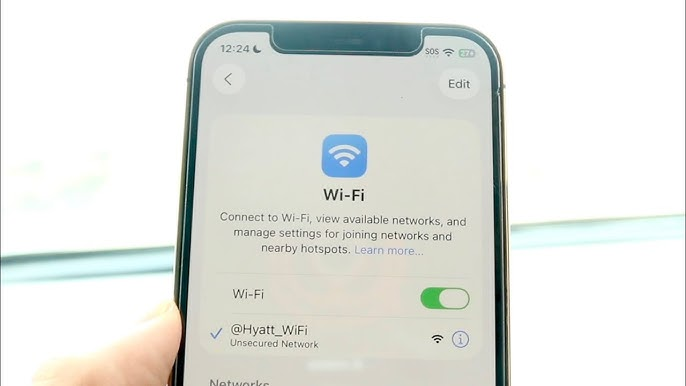Web3原生游戏面临哪些挑战?游戏公会未来路在何方?
原文来源:Decentralised
原文编译:Captain Hiro
本文来自Defi之道,Odaily星球日报经授权转载发布。
今天,来自IndiGG的Siddharth Jain和Sumanth和我一起做了一次思想实验。我们将尝试了解为什么人类如此喜欢游戏,Web3(也称为Web3.0)的出现对我们的社会和经济来说到底意味着什么,以及游戏公会如何成为游戏的未来。

上周的股票市场经历了一场血战。它让我意识到为什么传统金融世界只在工作日进行交易。Meta(Facebook)的市值在一个工作周内就跌去了近2500亿美元。似乎市场并不相信马克-扎克伯格对未来元宇宙的预想(我们会把这个问题留到以后的文章中讨论)。今天,我想让大家把更多的注意力转移到元宇宙领域的另一方面:游戏。游戏行业在过去几个月的时间内出现了四次前所未有的收购:
微软以680亿美元收购了动视暴雪公司
有史以来最赚钱的游戏《侠盗类车手》背后的公司Take-Two Interactive以128亿美元收购了社交游戏开发商Zynga
索尼收购了《光晕》和《命运》背后的工作室Bungie
字节跳动(TikTok)通过其游戏部门Nuverse以40亿美元收购了视频游戏开发商Moonton
看看这些主要的市场变动,似乎游戏业在自己的独立世界里运作,而更广泛的股票市场震荡在这里并不存在。这是为什么呢?首先,游戏现在是一个价值3000亿美元的产业,这使其他各种娱乐形式黯然失色。就规模而言,电视产业的市值是1000亿美元,而电影票房则是400亿美元。通常情况下,我们可以通过了解过去来预测未来的发展方向。那么,接下来就让我们先一起看看下面这些古代艺术品吧:

洞穴壁画是最初的NFT。来源:Link
上面这幅画位于印度尼西亚的一个古老的石灰岩洞穴里。它被认为是世界上最古老的洞穴壁画之一。但是你可以想想看,画这幅画的山顶洞人和我们一样都从事着同样的基本活动,我们可能是花了几个小时玩游戏,而他们则是花几个小时画画。我们都在创造一个替代的世界,通过画画或者游戏去想象一个不同的、幻想的现实。游戏打开了我们通往想象世界的一扇门,这对帮助儿童掌握有用的技能来说往往是至关重要的。随着孩子们成长并参与到游戏当中,他们通过游戏学习到了社会等级制度、协调、善与恶,以及非语言沟通。但我们为什么要玩数字游戏呢?在注意力持续下降的时代,是什么让数百万人长时间坐在屏幕前?
好的游戏能确定核心活动,并使之成为一种享受。一个好的核心循环(loop)使玩家处于一种心流(flow)的状态。Mihaly Csikszentmihalyi将心流定义为一种活动,人们的思想在这种活动中找到了足够的挑战和轻松,从而能够长时间地参与其中。有效的游戏将令人难以置信的故事和图形图像与诱发心流的活动相结合。但是,为什么它们能诱发心流的产生呢?也许是因为它吸引了最人性化的行为:角色扮演。其实,我们看待从宗教到政府一切事物的一种方式是把它当成一种精心设计的角色扮演行为。而社会的运作其实就是因为我们承担了相应的角色并坚持下去。游戏将角色扮演的障碍和摩擦减少到了最小化。这吸引了人类转换角色和控制环境的欲望。想要横冲直撞,与128名玩家一起玩射击游戏么?希望成为《帝国时代》中一统天下的帝王?要不要体验一下做一名改变历史进程的绝地刺客?游戏使你有可能在点击的瞬间成为你想成为的人或到达你想去的地方。

希德的游戏玩家需求层次理论
思考游戏的另一种方式是透过马斯洛需求层次的视角。游戏在多个层面上吸引了人类的欲望。在生理层面上,正如我刚才提到的,它给人类提供了逃离现有环境的机会。在安全层面上,游戏使人们能够在网络上发现微型社区,从而使玩家重新获得一种部落和友谊的感觉。对于被认为是有史以来最孤独的一代人来说,这并不是一件坏事儿。在微型社区内,由于在虚拟世界中做同样事情的时间较多,游戏玩家会交到朋友(如果幸运的话,还会有恋人)。能够不断提高水平的的游戏玩家还会继续领导公会或参加国际水平的赛事,从而获得更高的自尊。你可以考虑观看这个解释《荒野大嫖客:死亡救赎》最完善社区的视频,去进一步了解一下相关背景。从最高的层次来看,游戏允许他们的玩家通过有报酬的工作找到自我实现,比如通过参加电竞比赛获得奖金,或授权新的游戏玩家不断提高游戏排名。我想这是使游戏比其他消费领域如约会应用程序和社交媒体更有趣的部分原因。他们可以立即触碰我们需求层次的多个方面。我认为,相比之下,很多自我实现层面的需求并不发生在约会软件上。我不会再对游戏进行长时间的描述了,这一部分的内容主要是为非游戏玩家的读者提供的背景知识。
从Web2到Web3
最早的游戏时代遵循的是销售玩具的逻辑。它们只卖一次游戏,每隔几年更新一次。游戏工作室会在游戏发布时赚取最多的钱,就像今天的电影公司一样。普通游戏的价格在50到100美元之间,所以玩家在购买游戏时必须有意识地做出重大决定。而互联网的到来意味着玩家可以不时地对这些游戏进行远程更新,更重要的是,它将游戏玩家彼此联系起来。这时候的游戏可以对可下载内容(简称DLC)进行收费,并延长游戏发行方从售出游戏中赚钱的时间。这种模式在《孤岛惊魂5》和《正当防卫4》等大型游戏中普遍存在,甚至现在也是如此。随着行业竞争越来越激烈,我们看到了垂直捆绑(vertical bounding)模式的出现,订阅成为了一种新的赚钱模式。订阅模式取代了销售单款游戏,它使玩家能够访问由数百个游戏组成的游戏库。
这意味着更大的用户群体会流向订阅的游戏,游戏公司的收入会在游戏发布后继续增长。在今天,苹果公司在移动游戏应用方面就是这样做的。微软和索尼在Xbox和PlayStation上也有这样的举措。而这两种模式的收入都被数字商品的销售所超越。考虑到一个拥有一百万游戏玩家的社区,游戏中的数字商品往往会卖的很好,这是因为它们具有社会经济背景。稀有物品要么是通过拥有一定的技能获得的,要么是通过高价购买获得的,这些都是玩家游戏身份的象征。社区越大,决定身份地位的工具的价值就越高。在过去十年的某个时间点,游戏工作室认识到他们最好向玩家提供免费游戏,并专注于销售游戏中的小物品。这些小物品可能是新武器的解锁,角色审美上的变化,或者是游戏中的虚拟金钱。下面的图表比较了Xbox的收入来源是如何从零售转到线上收入的,这是游戏行业商业模式如何走向数字化的良好基础。

游戏中的微交易远比大额购买一款游戏更有吸引力,因为:
低价购买通常意味着较少的认知负荷
客户倾向于在一段时间内购买多个物品,从而导致每个用户的消费更多
它为游戏打开了一个庞大的用户群,这意味着游戏商有一个巨大的“金钱想漏斗”可以持续通过出售数字物品赚钱
这里有一个论点,即现在游戏的定价已经被优化到了低端玩家,因为这意味着儿童可以经常购买1-2美元的物品而不影响他们父母的支出,但Web3的游戏模式不是这样的,Web3游戏模式的运行在某种程度上类似于经济学,这其中有一些要点:
所有权:基于Web3的应用主要集中在用户拥有他们的数据。在游戏的背景下,所有权延伸到了游戏中的资产。用户应该能够转让、交易或在不同的游戏中使用游戏中的资产,如果他们决定这样做。
流动经济:我们看到的大多数以代币为主的游戏都有与代币相关的奖励系统。这些有点类似于游戏中的积分,只是在这种情况下,用户可以提取并出售这些代币比来获得真正的钞票,这也是边玩边赚类游戏经济功能的基础。
互操作性:这是个还没有实现的理论,但如果游戏中的资产是可以转让的,游戏基础经济可以交易,那么游戏中的资产也就可以相互交互。假设你花了50个小时玩一个游戏,你可能还需要从头开始玩另一个游戏。但如果在游戏中获得的资源可以帮你在下一个游戏中有更快的升级体验呢?用户拥有自己的游戏内资产,这也意味着他们很可能在玩的新游戏中出售这些资产来获得优势。
Web3原生游戏的挑战
在功能上,Web3的游戏将基于区块链的基础设施与金融激励相结合,从而为玩家在游戏中花费的时间提供经济支持。这是使Web3游戏既令人上瘾又令人厌恶的核心所在。一方面,游戏应该是有趣的。正如我之前所说,游戏是一种玩家逃避现实困难的方式。但是,自21世纪初以来,一直有游戏代理人(或代练)通过玩游戏为工作换取金钱利益。RuneScape、Farmville或GTA5,它们都有一个繁荣的代练市场,在这里,有技术或有时间的代练会得到其他希望在游戏中更快发展的玩家的补偿。对于大多数面向网络的游戏来说,它们所面临的巨大挑战是如何在超额的财务方面和游戏的乐趣方面找到一个微妙的平衡。现代生活是建立在对功利社会的信念之上,如果我们被告知只有那些有钱的人才能赢,那么大多数一开始就不会选择玩这款游戏。同样的道理也适用于游戏设计:如果它们被设计成只有愿意付钱的用户才能获胜,那么用户群就会明显减少。反过来,对于那些付得起钱的人来说,这也会使整个游戏体验变差,因为没有人喜欢独自玩。撇开哲学不谈,游戏还有一个方面使其独特。
目前形式的游戏是零和的:玩家必须一次专注于一个单一的游戏,在这个游戏中,他们被迫在有限的参数上进行优化。 用户必须不断地在创造财富(通过拥有资产)或享受乐趣之间进行权衡。 下面的象限在一定程度上解释了这一点。当今游戏架构的局限性意味着最激烈的图形游戏不能为用户一直移动资产而进行优化。想想像《正义之战》或《GTA5》这样的热门游戏,它们被优化为具有视觉吸引力和乐趣,而不是为了自定义或资产所有权。另一方面,Axie允许资产所有权,但它的可定制性却非常有限。这里的异类是Minecraft,个人可以建立自己的服务器,有自己的变量,并选择他的运行方式。在表格低所有权和低趣味性的极端,对应着税收和苦力工作。这两者都属于我们自己所处的默认游戏:现实生活中。

这就是为什么平衡如此重要的部分原因。一个选择玩乐的人(比如《GTA5》)可能会错过边玩边赚类型的游戏(如Axie)中获得的潜在收入。这也适用于游戏设计:当一个游戏的收入潜力超过现实生活中的工资时,就是用户将其视为工作的途径,而不是用于休闲。现在,让我们在马斯洛层次结构的背景下考虑一下Web3游戏。我在前面提到过,一个游戏通常能够解决马斯洛层次结构的多个方面。现在的游戏赚钱经济过度关注于创造收入。一些评论家已经开始把P2E(边玩边赚)经济中的磨练称为无意义工作(bullshit work)。这个词指的是对个人成长没有积极贡献的工作,它的存在仅仅是因为它还没有被机器取代的成本效益。虽然有一些逻辑,但值得一提的是,P2E经济允许参与者有更好的选择,而不是通常很容易得到的东西。如果做一份传统的工作更划算,那么做这份工作而不是玩P2E游戏就很合乎逻辑。其次,在像Axie Infinity这样的环境中工作,可以让参与者掌握在数字优先、远程工作环境中进行合作和协调所需的那种软技能。这是今天传统学术界所做不到的。第三,大多数玩这些游戏的人不会以一个游戏开始和结束。P2E经济是至关重要的,激励个人提高技能和了解市场上的其他机会的通道。这就是正在进行的重要的品牌重塑。从玩到赚到玩和赚,大多数Web3原生游戏将从单一的收入来源演变为补充其他收入来源的来源,而实现这一转变的一个重要组成部分就是所谓的公会。
公会与GameFi
公会是游戏中协调资源的平台。在Web3原生游戏的背景下,它们是建立在DAO之上的社会经济平台。某些游戏,如Axie Infinity,要求玩家在游戏前拥有一定数量的NFT。在一些新上市的游戏中,也可能有拥有代币的要求。公会的出现大大降低了大量新加入Web3游戏生态系统的玩家的进入门槛,使其有可能在不拥有NFT或代币的情况下进行游戏。这一点是如何实现的呢?现在有一个围绕“租赁”NFT的整个行业,这些玩家通过租赁在游戏中工作来获得报酬。公会作为一个DAO拥有NFT和游戏所需的代币。找到熟练玩家的个人被称为经纪人。他们类似于体育界的球探,从玩家产生的收入中获得分成。玩家反过来也会收到一部分来自游戏的代币奖励。这是一个用于加速P2E生态系统采用的非常初级的模式。
我们的理解是,公会将很快演变为更大的东西,并将对未来的游戏、工作和文化产生持久影响。由于公会在功能上是吸引大量用户的通道,它们很快就会成为关注的来源。就像我们今天让Twitch成为传统游戏的流媒体平台一样,Web3的原生流媒体平台将出现,以鼓励专注于Web3游戏生态系统的创作者。公会将能够利用他们的社区为获胜的团队寻找支持者,为社会事业筹集资金,或者只是把有类似兴趣的人聚集在一起。最近,我们已经看到了一波这样的活动,YGG社区一起为菲律宾的一场台风筹集资金。当用户聚集在这些公会周围时,我们自然会看到玩家的等级制度从中显现。最有天赋的游戏玩家将被赋予额外的资源(如游戏商品和赞助),在大型电子竞技比赛中竞争。公会赞助自己社区的队伍以获取部分赢利将成为普遍现象。
今天,DAO或基于公会的工作最大的问题是它缺乏传统工作给予的安全感。受雇于DAO的人没有医疗、养老金,在很多情况下甚至没有银行业务。有许多企业在寻求解决这个问题,但难题的一个关键部分是公会本身如何成为金融企业集团。如果公会用他们的一部分现金流来收购新兴游戏的股份,会怎么样?或者,鉴于他们对行业的长期展望,他们可以在更长的时间内持有稀缺的NFT。在这种情况下,一个有效的公会将更类似于大型养老金或捐赠基金,并将成为较新的P2E游戏从战略上筹集资金的高度优惠的合作伙伴。理想的公会是一个拥有现金流、资产和不断增长的账面投资的金融集团。有一些平台可以实现这种转变,例如,Openguild.io使个人能够投资于公会的收入流;GuildOS是一个能够毫不费力地管理大规模公会的企业;此外,BreederDAO旨在为大型P2E游戏建立分析和NFT发行层。(注:我们需要一个与公会有关的应用的市场地图。我将为想要建立一个的读者设立1000美元的赏金)
公会为Web3游戏生态系统提供了一个指数化的赌注,因为他们经常接触到多个游戏。在基于Web3的游戏中,关键的商品不是IP,也不是游戏部署的基础设施,而是用户群。公会与他们的关系最为密切。投资他们是投资者在游戏和NFT生态系统中获得指数化赌注的一种方式。在我们看来,公会的逐步发展是成为大规模的金融应用,以满足其用户群的特定需求。一个公会银行将提供汇款、保险、外汇和自己的内部贷款台,根据游戏玩家的声誉评估信用度。最终,公会的发展将成为全栈式的金融技术应用。

不过,这一切到底意味着什么?在我们看来,由于三个关键因素逐渐爆发,游戏生态系统将在未来几年内发生演变:
新冠病毒大流行在2020年初使大量人失去了工作。人们辞去了旧的工作,并通过非传统的来源寻求新的意义和收入。而游戏正在发展成为人口中迅速增长的一部分人的一个良好收入来源。
教育生态系统辜负了整整一代人,而这一代人现在正在为提高技能和增加收入而寻找其他选择。P2E生态系统恰恰能够实现这一点,尽管现阶段它还没有形成规模。这里的商业模式仍未得到充分的探索。我们是否可以简单地通过奖励个体的方式来提高他们的技能?从学习到赚钱的概念已经在市场的一些边缘部分变得普遍。
考虑到GameFi(即玩家可以交易、借出或租出他们的游戏赢利,或以他们为抵押进行借贷)可能演变成的情况,我们现在可能还处于史前时代。针对NFT的贷款?为什么不针对游戏中的声誉进行贷款?是否可以尝试与下一个真人直播大咖分享收入?游戏内NFT的衍生品?这里有大量的模型可以修补,现在认为这个生态系统不重要还为时过早。
我认为Web3游戏现阶段的一个问题是,投资者可能会给那些单位经济效益很差的项目提供很高的估值。如果我是投资者的话,我将首先关注游戏项目的价值获取、单位经济和盈利能力。



